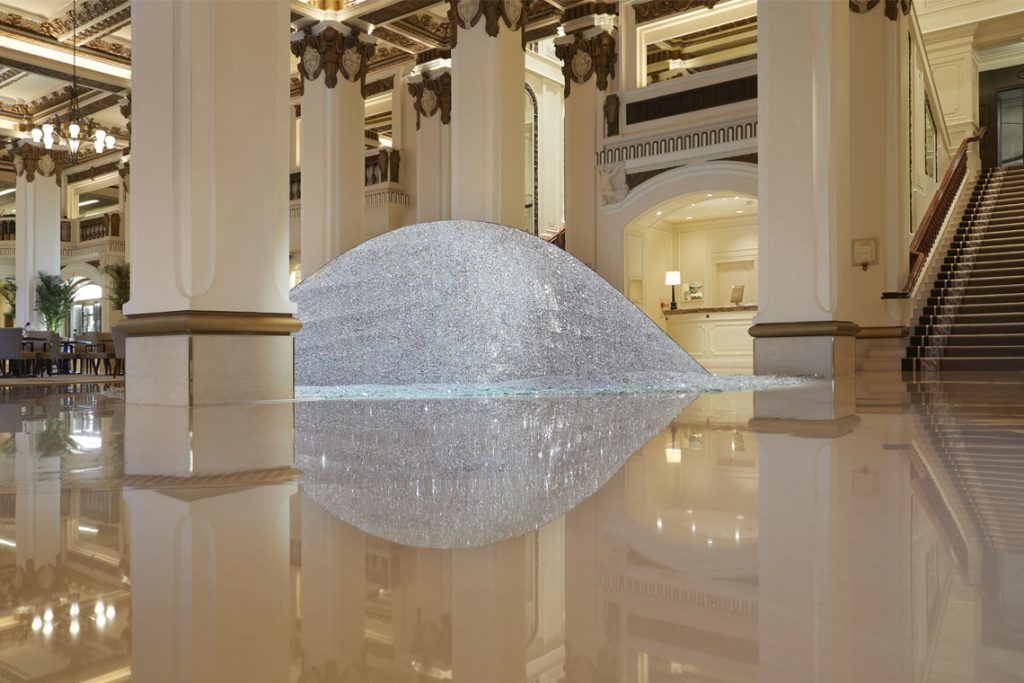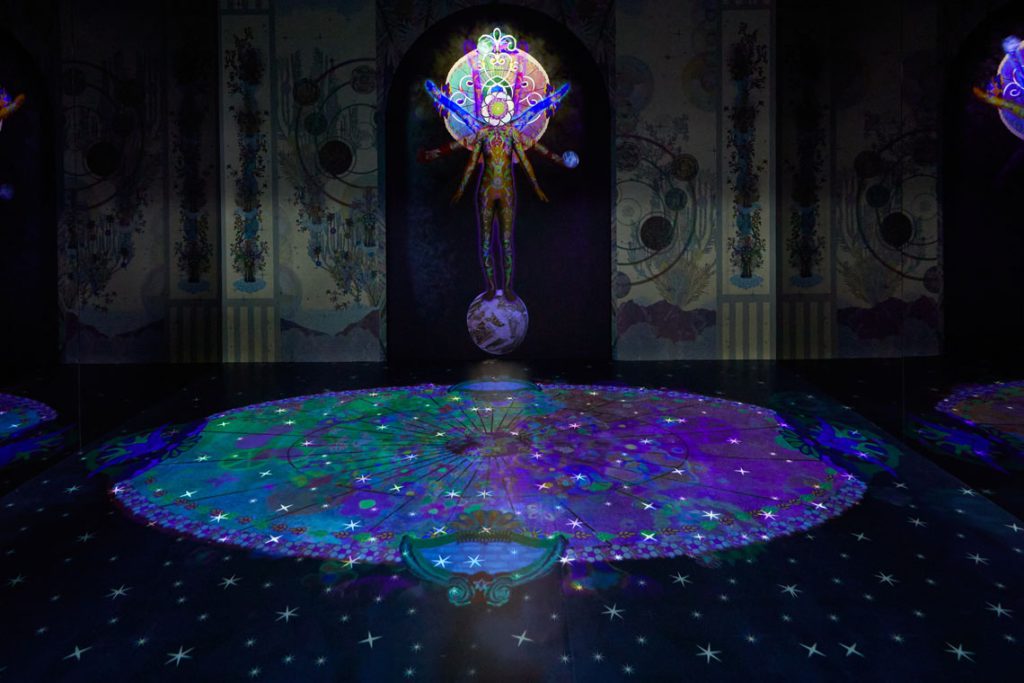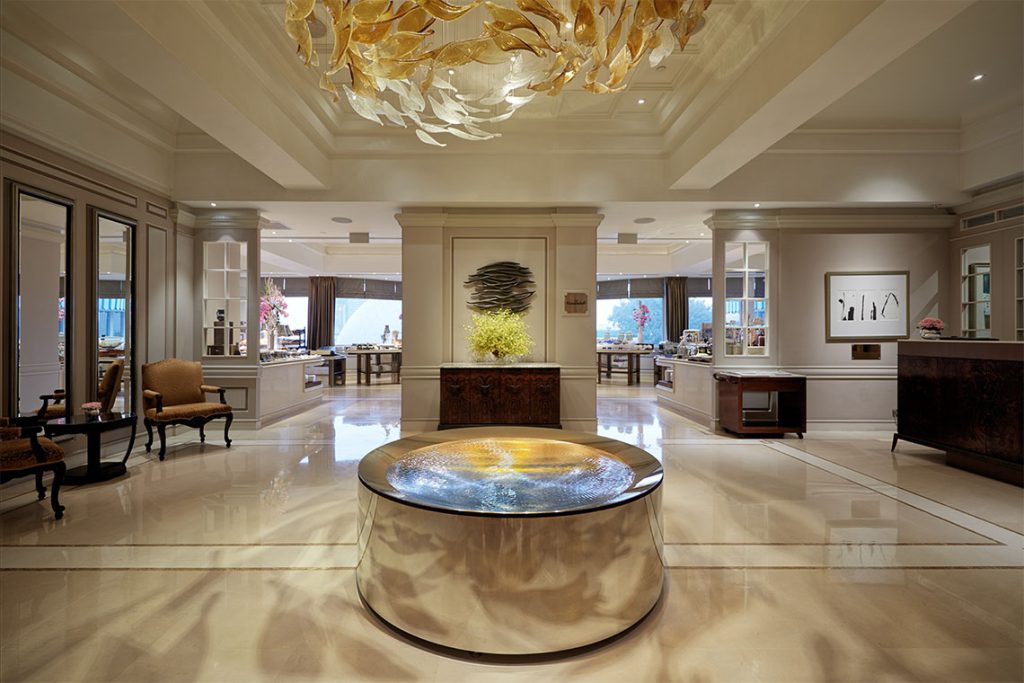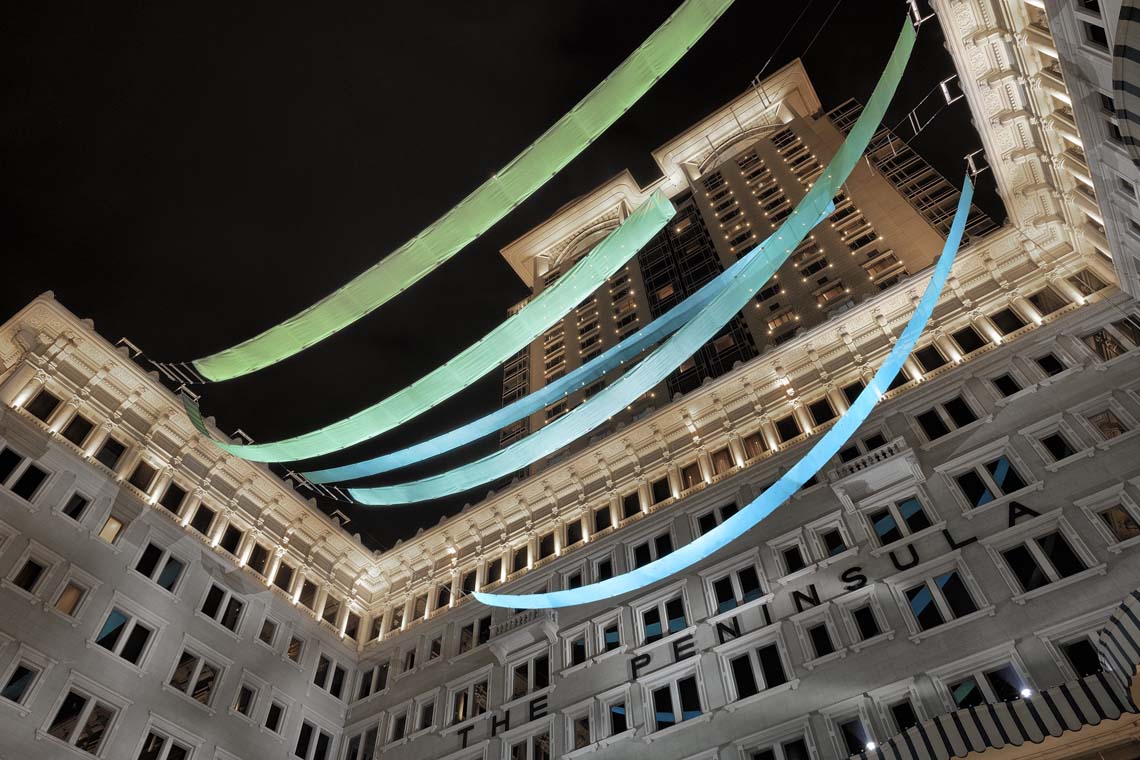Art and heritage intertwine at this year’s Art in Resonance at the Peninsula Hong Kong as the public are encouraged to engage with four experiential works throughout the property.
For the month of March, the city of Hong Kong comes alive with art and culture. Events, public installations, performances, exhibitions and art fairs galore! Art is becoming more accessible than ever, and doing their part to enhance the cultural landscape is the Peninsula’s Art in Resonance travelling exhibition.
Introduced in 2019, in collaboration with the Peninsula’s Global Cultural Advisors Bettina Prentice and Isolde Brielmaier, the commission-based art programme funds and supports emerging and mid-career artists to create public works to exhibit across the Peninsula’s impressive portfolio of destinations. The Art in Resonance programme gives guests and visitors a chance to casually encounter art where they might least expect it–right within the walls of the hotel they temporarily call home.

Image courtesy of The Peninsula Hotels.
The 95-year-old Hong Kong flagship location, affectionately called “the Grande Dame of the Far East”, is no stranger to supporting the arts with works from well-known names such as Tracey Emin, Michael Craig-Martin and Richard Wilson, in partnership with London’s Royal Academy of Arts gracing the property. For this edition of Art in Resonance, the iconic façade of the Peninsula on Kowloon’s Salisbury Road hosted Kingsly Ng’s Esmeralda (2024). Best seen at night, lit up in the front courtyard of the colonial-era building, swaths of jade and ocean-coloured 36m fabric ribbons undulated with the help of mechanics, accompanied by sequenced music played over the outdoor speakers (or in the age of technology, through the Peninsula’s website!). Ng’s kinetic installation takes its name from the water city with infinite routes of travel mentioned in Italo Calvino’s 1972 book Invisible Cities. As a port city, Hong Kong is no stranger to water and its impact; from the boats carrying people and trade goods, the typhoons and rainy seasons to the seemingly constant humidity in the air. The work is in immediate harmony with the location and the public, providing a meditative intervention from the busy, concrete city streets, for which the artist noted his research into the term “urban acupuncture,” a concept from the Brazilian city planner and politician Jaime Lerner.
Through the doors of the Peninsula, the reception foyer hosts the monumental installation from Elise Morin, entitled SOLI (2019). Made from roughly thirty thousand pulverised CDs, the work unpacks the burden of material waste and questions of data and confidentiality. There is beauty in the mundane objects that have been transformed into a disco ball-esque mound resembling a natural form, perhaps a wave or a dune. Glistening in the sun through the large-scale windows, the work echoes the environment and engages with daily life as the fragments of digital waste reflect the changing lights and creates a temporary pause for visitors as they pass through the space.

Image courtesy of The Peninsula Hotels.
Also on the ground floor, Visionary Reality Portal (2024) by Saya Woolfalk immerses guests in the artist’s multisensory chamber, complete with a QR code to access a filter, allowing visitors to become a part of the installation and exist in a space beyond physical reality. Hand-painted paper flooring and 3D animations are filled with cultural references from stained glass windows to sacred objects and patterns. The work is a continuation of Woolfalk’s ongoing series The Empathics (2011-ongoing), the artist creates a fictional group aiming to achieve utopia by merging DNA with plants while creating a dialogue around hybridity, spirituality, ethnography and racial discourse through the concept of physical transformation, as well as how humans place themselves within global culture and digital realms. Speaking at a press conference, the artist mused on the work’s connection to the host city: “I had never been to Hong Kong and I had never seen screens of LED lights placed on top of buildings so that you could see the actual building through. It’s almost as if there is this virtual world superimposed on top of the physical world. I think that the virtual world we inhabit on our phones and our computers is now impacting the way we imagine and move through space, and Hong Kong seems to objectify that in some way where the digital world is hyper-present and embedded into the analogue.”

Image courtesy of The Peninsula Hotels
Lachlan Turczan’s Harmonic Resonance (2024) is situated at the top of the stairs leading up from the entrance hall, emerging to meet at eye level as visitors walk up. Turczan’s kinetic sculpture features a parabolic mirror with a shallow pool of water. A low-frequency infrasonic tone vibrates through the liquid creating patterns on the surface in a visualisation of sound. “I often work with water and the starting point for the work was the desire to tangibly touch light… I use sound vibrations to create the waves on the surfaces. When I came to Hong Kong, walking along the promenade in the evening is probably one of the most profound moments burned into my mind, the way the lighting from the [skyscraper] facades are captured on the water of the harbour as a by-product of the signage of the city,” the artist shared at the press conference. An interactive work, the piece encourages visitors to touch the water and physically become in resonance with the work as vibrations hum through one’s body. “Public art at its best is relinquishing to the world. You have the chance to profoundly impact someone at a moment who’s not prepared to view art in that context,” Turczan continued. It is these purposeful interruptions throughout the Peninsula that create magical interactions with the public. With Art in Resonance, unique experiences create memorable interventions as art, culture and the hotel’s heritage intertwine.
Art in Resonance artworks will remain at the Peninsula Hong Kong through May 2024



